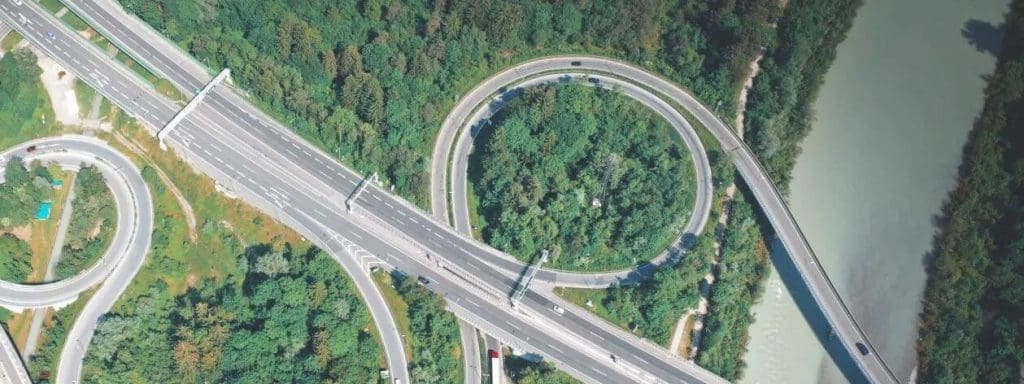
Urban planning and GIS (Geographic Information Systems) are at the heart of building sustainable, efficient cities. They shape how cities grow, help address infrastructure needs, and ensure a high quality of life for residents. However, effective local government planning requires accurate data, detailed analysis, and real-time collaboration—areas where GIS and Azure Maps shine. These technologies enable local governments to make informed decisions, improve urban infrastructure, and engage with citizens in more meaningful ways.
Understanding the Role of GIS in Urban Planning
GIS has become an essential tool for urban and local planning by helping governments understand, analyze, and visualize spatial data. This powerful technology simplifies complex geographic information, empowering planners to develop communities that meet residents’ needs while balancing environmental and logistical constraints. Urban planning and GIS data management go hand-in-hand, offering a structured approach to collect, organize, and analyze spatial datasets for informed decision-making.
What is GIS and How Does it Work?
Geographic Information Systems (GIS) visualize and analyze spatial data—data tied to specific locations. Think of it as a digital map that incorporates layers of information, like demographics, infrastructure, or environmental conditions. These systems rely on components like spatial data collection, mapping, and advanced analysis tools. Whether it’s using satellite imagery to track changes in land use or integrating IoT data for real-time updates, GIS forms the foundation for informed decision-making in urban planning.
How GIS Supports Decision-Making in Urban Planning
GIS excels at overlaying different types of data in one map. Imagine combining population density, traffic flow, and zoning boundaries into a single visualization. This urban planning and GIS capability with Azure Maps gives planners insights into how land is being used and what areas require improvements. Need to predict how new housing projects will affect traffic? GIS modeling can forecast the impacts on local planning. From transportation planning to zoning approval, GIS enables you to make data-backed decisions for local government planning that benefit both cities and their residents.
The Role of Azure Maps in Enhancing GIS Capabilities
While GIS is powerful on its own, Azure Maps takes it further by providing scalability, real-time data integration, and cloud-based collaboration. As a geospatial mapping platform specifically tailored for developers and businesses, Azure Maps urban planning and GIS tools allow local governments to visualize and interact with data more efficiently.
Key Features of Azure Maps for Local Governments
- Azure Maps includes tools for real-time data integration, which ensures maps and analyses stay up to date.
- Its interactive mapping capabilities let planners visualize data in dynamic ways, encouraging cross-departmental collaboration and public engagement.
- The platform is highly scalable, meaning it can handle city-level projects just as easily as neighborhood-specific tasks.
- Accessibility is another key feature, as local governments can access Azure Maps remotely, enabling teams to work together regardless of their locations.
- You can explore the full suite of urban planning and GIS features Azure Maps offers, including mapping and visualization.
Benefits of Cloud-Based Mapping Platforms
Cloud-based solutions like Azure Maps offer significant advantages over traditional GIS setups. You no longer need to rely on bulky servers or duplicate data across departments. Data sharing becomes seamless, enabling better communication between city planners, utility departments, and emergency services. Plus, real-time updates ensure you’re always working with the latest information. Whether it’s tracking infrastructure conditions or monitoring traffic patterns, cloud platforms are essential for modern urban planning.
Applications of GIS and Azure Maps in Urban Planning
GIS and Azure Maps offer practical toolsets to help build solutions for challenges local governments face. From visualizing data to planning for future growth, here’s how GIS assists in urban planning or local government planning:
Data Visualization and Overlay Analysis
Layering data is one of GIS’s strongest capabilities. Imagine combining maps of existing infrastructure, population trends, and environmental risks. This process helps uncover areas ideal for development or highlights communities needing additional resources. Azure Maps enhances these visualizations, making complex data accessible to government officials and even the public.
Infrastructure Management
Urban planners use GIS to monitor infrastructure conditions like road quality and water supply networks. Urban planning and GIS data management with Azure Maps play a vital role in organizing and analyzing this data for effective decisions. It allows local governments to track maintenance schedules, map out utility pipelines, or plan the optimal locations for new schools or hospitals. By analyzing current conditions with real-time data, cities can prioritize repairs and allocate resources more effectively.
Transportation Planning
Traffic congestion is a constant challenge for cities. GIS enables planners to identify bottlenecks, design efficient public transit routes, and assess how new construction could disrupt traffic flow. Azure Maps can take it a step further by integrating GPS and IoT sensor data to monitor traffic conditions in real time, ensuring smarter transportation planning.
Environmental Monitoring and Sustainability
For sustainable urban planning and development, GIS tracks elements like green spaces, air quality, and flood risks. By integrating IoT sensors with Azure Maps capabilities, local governments can enable real-time environmental monitoring. This can help manage natural resources more responsibly and design neighborhoods that balance economic development with environmental protection.
Emergency Response and Disaster Management
When crises strike, quick and informed responses save lives. Using GIS, local governments can map evacuation routes, identify high-risk zones, and allocate emergency resources where they’re needed most. Azure Maps enhances these processes by offering the tools you need to create instant updates and mobile accessibility. For example, during a flood, local governments can use location-based data to manage emergency response teams and reroute traffic away from danger zones.
Benefits of Implementing GIS and Azure Maps for Local Government Urban Planning Needs

GIS and Azure Maps provide clear advantages for local planning. By integrating spatial analysis with real-time mapping, local governments can streamline operations, connect with citizens, and make smarter decisions.
Enhanced Public Engagement Through Interactive Maps
Public involvement is crucial in local government planning. With tools like Azure Maps, governments can create interactive maps for residents to view upcoming projects, share feedback, and stay informed. This not only improves transparency but also fosters trust and collaboration between governments and their communities. Interactive tools for map visualization make it easier for residents to understand complex urban plans.
Optimized Resource Management
Accurate spatial data ensures that resources like utilities, schools, and public transit are aligned with community needs. Urban planning and GIS maps help local governments see where gaps exist and prioritize accordingly. Azure Maps enhances this process by offering cloud-based accessibility, ensuring decisions are based on the most current information, even from remote locations.
Improved Collaboration Between Departments
Planning public services like waste management or water distribution often involves multiple departments. Azure Maps simplifies data sharing, making sure everyone is working from the same up-to-date information. This coordinated approach reduces redundancies and speeds up project planning, saving time and money.
Try Azure Maps for Free
GIS and Azure Maps have revolutionized urban planning by equipping local governments with better tools for decision-making and resource management. Whether it’s environmental monitoring, transportation planning, or community engagement, these technologies enhance every aspect of local planning. By embracing these tools, your city can ensure smarter, more sustainable growth while fostering greater transparency and trust with residents. Try Azure Maps for free today.

